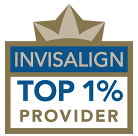Early Orthodontic Treatment for Children
What is the difference between early orthodontic therapy and regular orthodontic treatment, and why could my child need early treatment? ‘ Why is it beneficial for my child’s health if he or she begins treatment as soon as possible?
Children who have orthodontic treatment at a young age have numerous questions, to mention a few. According to the American Association of Orthodontists, children as early as seven should begin visiting an orthodontist (AAO). The orthodontist will decide whether or not your child needs orthodontic treatment at this session.
Early treatment (also known as Phase One) begins when children are eight or nine years old (Phase Two will begin around age 11 or older). Early therapy may help prevent or reverse certain biting disorders, such as an underbite. As a consequence, if treatment is started early enough, extractions will be less probable in the future.
Signs that your kid may benefit from early orthodontic treatment include:
- Early or late tooth loss in infants (your child should typically start losing teeth around age five, and will have all permanent teeth around age 13)
- You have difficulty biting or chewing.
- Breathing via the mouth
- Your child may still be sucking his or her thumb after the age of five.
- Speech difficulty
- Top and bottom teeth stretch out from each other
- Teeth that do not fit together normally
- When your child opens or closes his or her mouth, the jaw moves (crossbites)
What are the most prevalent reasons for orthodontic problems, and what are the benefits of initiating treatment as soon as possible?
Problems with dental alignment and bite may be inherited or caused by trauma to the mouth, tooth loss that happens too early or too late in life, or thumb-sucking habits, all of which can contribute to orthodontic disorders such as crowding and overcrowding.
Most children have lost all of their baby teeth by the time they reach their late teens, and their jaw bones have stiffened and ceased growing. Patients in their thirties and forties may have to wait longer for orthodontic treatment and may need a tooth extraction or oral surgery. Youngsters who get orthodontic treatment as children may reduce the need for adult orthodontics, lowering the risk of extraction or surgery in the long term.
















